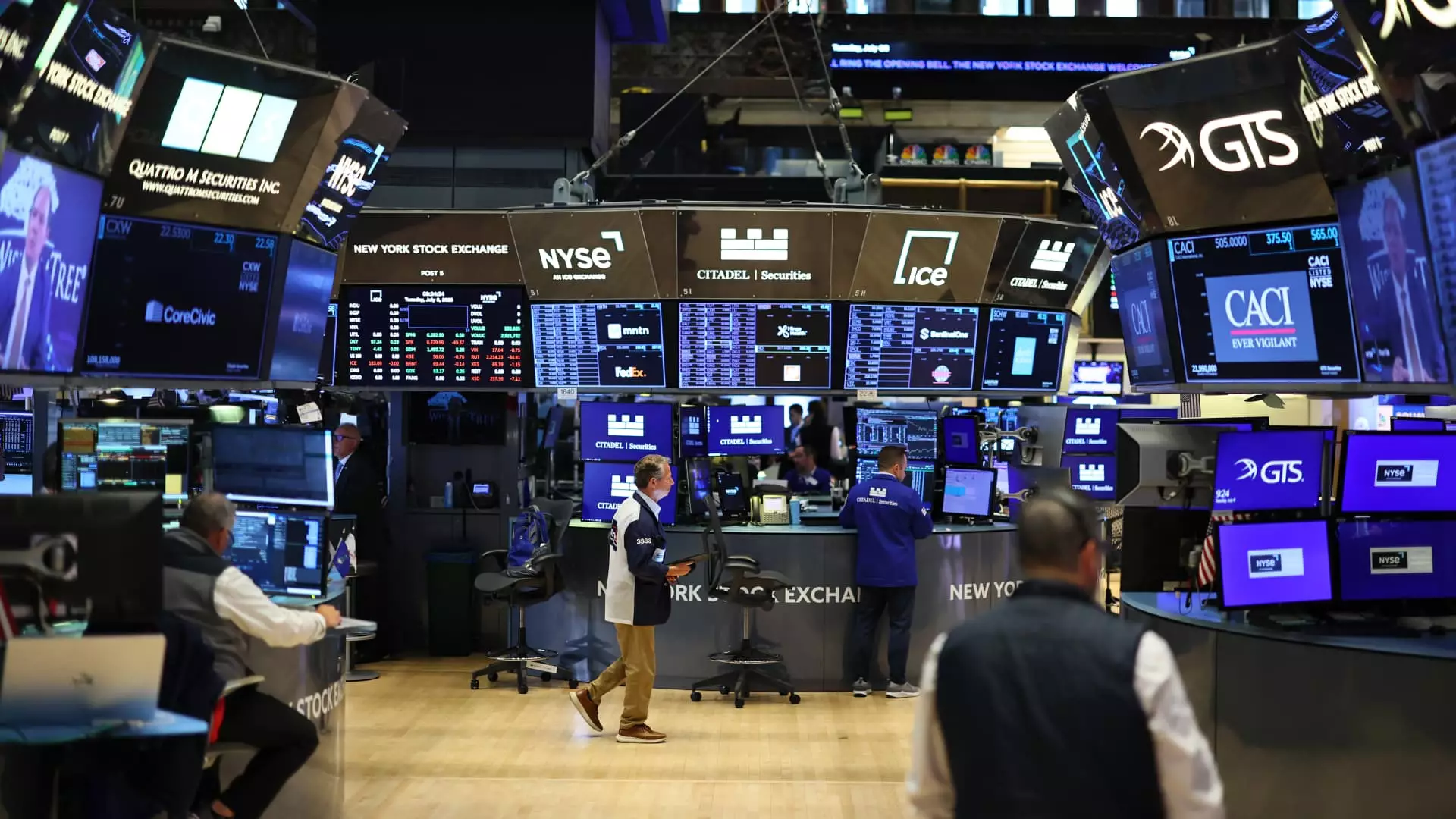As the financial landscape becomes increasingly uncertain, the prevailing sentiment among financial experts points toward turbulent times ahead. Despite the persistent optimistic narratives pushed by some institutional voices, a more critical analysis reveals that equities may face significant headwinds in the coming months. The fundamental concern is rooted in macroeconomic shifts—particularly a slowing growth trajectory coupled with resilient inflation—and these trends threaten to undermine investor confidence and market stability. For those attuned to pragmatic investing, complacency is perilous; instead, a defensive posture rooted in fixed income allocation becomes not just advisable but essential.
The forecast for the second half of 2024 sees a palpable deceleration in economic activity. Vanguard’s Roger Hallam signals a cautious stance, emphasizing that the labor market will likely continue to cool, pressing the Federal Reserve to navigate delicate policy adjustments. He anticipates an eventual rate cut to soothe the economy’s fragility, a move that spells potential relief for bond markets. This strategic shift prioritizes bonds—particularly government securities—over equity gains that could be fleeting if the anticipated slowdown materializes. Investors should recognize that traditional equities might underperform as macro risks escalate; thus, fixed income’s defensive qualities could become a sanctuary amidst unpredictable fluctuations.
Rethink Your Portfolio: The Case for a Barbell Approach
While some experts suggest a cautious stance on stocks, others advocate for a nuanced strategy to manage downside risks—most notably, the “barbell approach.” BlackRock’s Jay Jacobs proposes this method, emphasizing that a portion of investments should remain in cash or conservative assets while selectively entering equities with downside protection. The idea is clear: avoid overexposure to volatile markets and instead position for resilience through buffer ETFs. These funds, designed with risk mitigation in mind, can crouch beneath economic storms and still capitalize on market recoveries.
One compelling illustration is BlackRock’s MAXJ ETF, which caps upside potential but provides a buffer against declines. Such vehicles may seem counterintuitive for aggressive investors, but in a fragile economic environment, they represent the pragmatic middle ground—offering some upside while safeguarding against downturns. As market sentiment shifts, expect more investors to adopt this balanced stance, especially as macroeconomic headwinds intensify and geopolitical fragmentation impacts global markets. Infrastructure stocks, for their part, emerge as macro trend plays, representing tangible growth opportunities amid political and economic uncertainty. But these are strategic bets—nothing guarantees safety in a volatile landscape.
Fundamentally, a Cautious Stance Is Justified
The overarching message is that investors cannot afford naïveté in this environment. The narrative of perpetual growth and steady gains has been challenged by concerted macro risks—rising inflation, a cooling labor market, and geopolitical fragmentation all threaten to curb traditional growth engines. In such circumstances, it would be irresponsible to cling to overly optimistic assumptions. Structured caution, diversification into fixed income, and a selective exposure to robust macro themes are not signs of pessimism but a rational acknowledgment of reality.
Fundamentally, this shift calls for a reassessment of risk appetite. While the allure of high returns from equities remains, the prudent investor recognizes that seismic shifts in the macroeconomic landscape can blunt those gains. Defensive positioning—through government bonds, buffer ETFs, and infrastructure investments—offers a shield against unexpected downturns. It’s about resilience, not chasing runaway growth in a market that appears increasingly fragile.
In the end, the current environment demands that investors shed their complacency, prioritize stability over speculative gains, and adopt a more conservative, yet opportunistic, approach to wealth preservation and growth. The window of opportunity may be narrowing, but the right strategy can still navigate these stormy waters—if executed with discipline and foresight.

